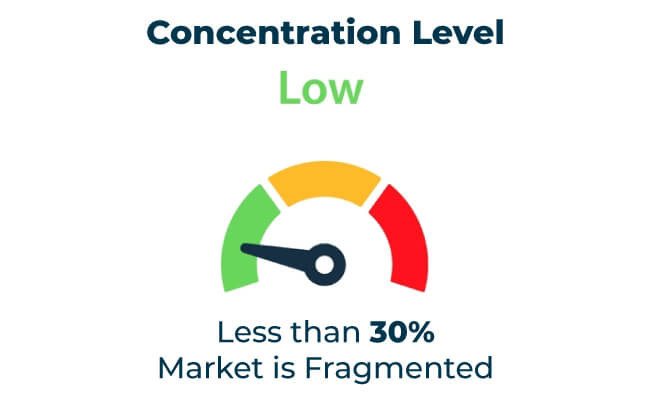The glass container market is undergoing a transformation driven by sustainability, innovative designs, and advancements in manufacturing processes. Companies are focusing on recyclable, durable, and lightweight glass packaging solutions to meet the rising demand from environmentally-conscious consumers and stringent regulatory requirements.
By 2035, the market is projected to reach USD 92.3 billion, growing at a compound annual growth rate (CAGR) of 3.4%. Major trends include premiumization, enhanced recycling initiatives, and cost-efficient production processes that align with changing consumer preferences and sustainability goals.
Manufacturers are leveraging advanced glass-forming technologies and sustainable raw materials to enhance the appeal and functionality of their products. Collaborations with key industries, such as food and beverage, pharmaceuticals, and cosmetics, ensure that glass packaging solutions align with branding and sustainability strategies.
| Attribute | Details |
|---|---|
| Projected Value by 2035 | USD 92.3 billion |
| CAGR during the period 2025 to 2035 | 3.4% |
Explore FMI!
Book a free demo
Factors Driving Market Growth
The glass container market is expanding due to increasing demand for sustainable, premium, and aesthetically appealing packaging solutions. Innovations in manufacturing and design enable companies to meet these demands effectively.
Global Market Share & Industry Share (%)
| Category | Market Share (%) |
|---|---|
| Top 3 Players (Ardagh Group, Owens-Illinois, Verallia) | 13% |
| Rest of Top 5 Players (Vidrala, Stölzle Glass Group) | 08% |
| Next 5 of Top 10 Players | 04% |
Type of Player & Industry Share (%)
| Type of Player | Market Share (%) |
|---|---|
| Top 10 Players | 25% |
| Next 20 Players | 43% |
| Remaining Players | 32% |

Year-on-Year Leaders
In-House vs. Contract Manufacturing
| Region | North America |
|---|---|
| Market Share (%) | 30% |
| Key Drivers | Strong recycling infrastructure and premium demand. |
| Region | Europe |
|---|---|
| Market Share (%) | 35% |
| Key Drivers | Strict recycling regulations and closed-loop systems. |
| Region | Asia-Pacific |
|---|---|
| Market Share (%) | 25% |
| Key Drivers | Rapid urbanization and growing beverage industry. |
| Region | Other Regions |
|---|---|
| Market Share (%) | 10% |
| Key Drivers | Demand for affordable and sustainable solutions. |
Sustainability, premiumization, and advanced manufacturing will shape the future of the glass container market. Companies prioritizing eco-friendly practices, leveraging digital technologies, and engaging with consumers will lead the market. Automation and AI will optimize production processes, reduce waste, and improve competitiveness.
| Tier | Key Companies |
|---|---|
| Tier 1 | Ardagh Group, Owens-Illinois, Verallia |
| Tier 2 | Vidrala, Stölzle Glass Group |
| Tier 3 | Vetropack, Anchor Glass, Consol Glass |
The glass container market is poised for steady growth, driven by sustainability initiatives, technological advancements, and premiumization trends. Companies investing in eco-friendly practices, material innovations, and recycling infrastructure will secure a competitive edge in this dynamic industry.
Key Definitions
Abbreviations
Research Methodology
This report relies on primary research, secondary data analysis, and market modeling. Industry experts and key stakeholders validated insights.
The glass container market includes sustainable packaging solutions for food, pharmaceuticals, cosmetics, and alcoholic beverages, addressing the need for premiumization and environmental sustainability.
Demand for premium packaging, sustainability initiatives, and recycling innovations drive growth.
The market is projected to reach USD 92.3 billion, growing at a compound annual growth rate (CAGR) of 3.4%.
Ardagh Group, Owens-Illinois, and Verallia lead the market, focusing on innovation and sustainability.
High energy costs, fragility, and limited recycling infrastructure are significant challenges.
Opportunities include premiumization trends, e-commerce growth, and material innovations.
Kraft Packaging Market Trends - Growth & Forecast 2025 to 2035
Flexible Frozen Food Packaging Market Growth - Forecast 2025 to 2035
Flexible Thin Film Market Trends - Growth & Forecast 2025 to 2035
Hydrogel Market Demand & Technological Advances 2025-2035
Industrial Filling Machine Market Trends – Growth & Demand 2025 to 2035
Insulated Coolers Market Insights - Growth & Forecast 2025 to 2035

Thank you!
You will receive an email from our Business Development Manager. Please be sure to check your SPAM/JUNK folder too.